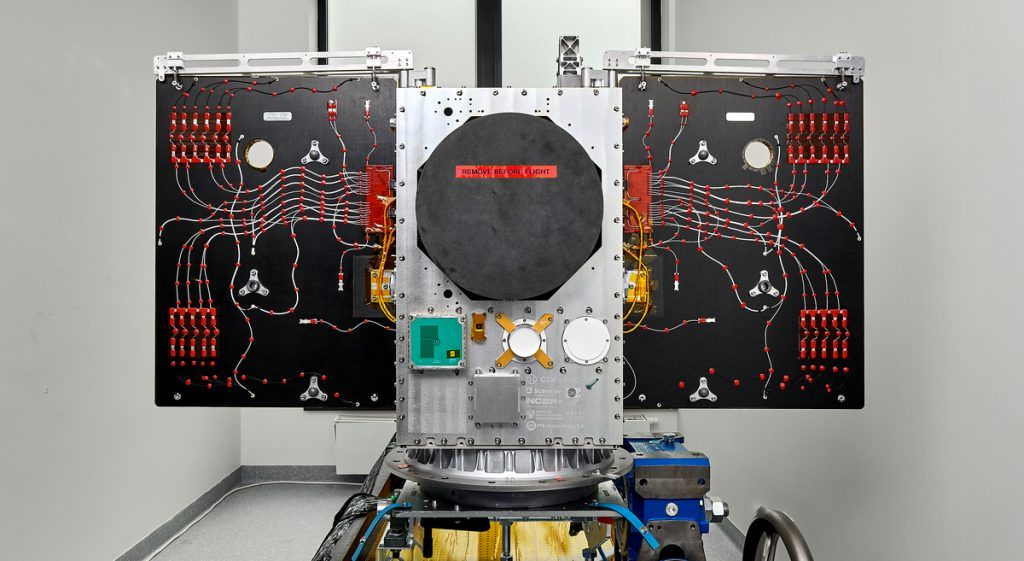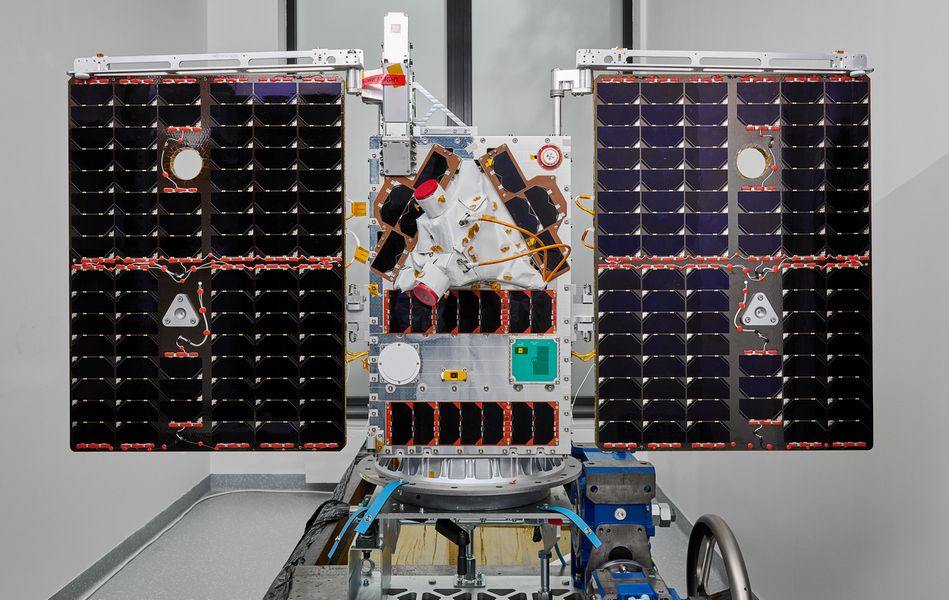Creotech Instruments has announced the successful completion of qualification tests for EagleEye, Poland’s largest and most advanced observation satellite to date. This milestone marks a significant step towards a mid-year launch, which will be a pivotal moment for Poland’s aerospace sector. The satellite recently underwent rigorous testing under simulated space environment conditions. Over the next six weeks, EagleEye will be integrated with Elon Musk’s Falcon-9 rocket, which will place the satellite into an orbit of approximately 510 km. The satellite will then transition to a very low Earth orbit (VLEO) at an altitude of around 350 km, where its operational capabilities and Earth imaging technologies will be put to the test.
The mission consortium consists of Creotech Instruments S.A. (project leader), Scanway S.A., and the Space Research Center of the Polish Academy of Sciences (CBK PAN). The satellite was built using Creotech Instruments’ proprietary HyperSat platform, which is already an essential component of a number of civil and defense projects at national and European levels.

The satellite’s readiness was confirmed in Berlin, where it underwent qualification tests including system interoperability and operational performance, witnessed by SpaceX representatives. Subsequent tests involved rigorous vibration and temperature challenges, simulating conditions harsher than those expected during launch. All tests were completed successfully, with further thermal vacuum tests at the Space Research Center of the Polish Academy of Sciences confirming its ability to operate in vacuum conditions. Thus, EagleEye has demonstrated readiness for orbit.
The success of this complex engineering project was made possible by the combined potential of the consortium partners, the innovative HyperSat satellite platform, and compliance with stringent ECSS quality standards used by the European Space Agency. The satellite is scheduled for a Falcon 9 launch from California in mid-2023, with the exact date to be announced later by SpaceX.
“We are extremely proud to report that EagleEye has passed all required tests, demonstrating the effectiveness of our technology under simulated mission conditions and achieving Technological Readiness Level (TRL) 8. Preparations are now underway to ship the satellite to Vandenberg Base, USA, for final onboard battery charging and integration with the Falcon 9 rocket. The next and last stage will involve readying the satellite for launch, which will be managed by our partner, SpaceX,” says Grzegorz Brona, PhD, President of the Management Board (CEO) of Creotech Instruments S.A.
EagleEye: A Pivotal Mission for the Polish Space Sector!
Built entirely in Poland and involving local companies, EagleEye enhances national capabilities in designing small satellites and represents a significant milestone for the Polish aerospace sector. Weighing approximately 55 kg, it matches the combined mass of all Polish satellites built to date. After solar panel deployment, its dimensions stand at 55 cm x 150 cm x 90 cm.
“Designing and constructing a satellite of this size in Poland demanded unique expertise,” notes Grzegorz Brona.

EagleEye is also the most advanced microsatellite in the country’s history, potentially positioning Poland among a select group of nations capable of creating advanced space systems for national needs, the European Space Agency, and global commercial clients. To date, only eight entities in Europe have demonstrated the capability to build and space-test satellites weighing at least 50 kg.
“This mission has significant implications for the entire domestic space sector. It paves the way for local enterprises to enter the rapidly expanding and lucrative market for the design, construction, integration, and launch of smallsats into Earth orbit. It is both a great honor and great responsibility,” concludes Grzegorz Brona.
The mission’s distinct capability to operate in a very low Earth orbit (VLEO) allows the satellite to descend to an altitude of about 350 km and provide enhanced Earth imaging quality, crucial for both civil and defense applications.
“The margin for error in space is extremely small. Reaching orbit and achieving successful operation require employing the most advanced engineering achievements. During launch, the satellite is exposed to vibrations caused by rapid acceleration and the rocket piercing through the atmosphere, as well as temperature fluctuations of +/- 80 degrees Celsius, and cosmic radiation,” explains Marcin Bieda, Ph.D., Eng., Chief Systems Architect at Creotech Instruments S.A.
As the consortium leader, Creotech Instruments is responsible for the entire EagleEye mission, including preparing the HyperSat satellite platform and its components, integrating the satellite, and launching it into Earth orbit in cooperation with ExoLaunch, a SpaceX integration operator.
“Building an advanced piece of hardware like this required the involvement of hundreds of people, both from our company and the consortium partners involved in this endeavor. In this way, we are building competencies not only for Creotech but also for the entire Polish space sector,” adds Marcin Mazur, Project Manager of EagleEye.
EagleEye is equipped with an optical telescope designed and manufactured by Poland’s Scanway S.A. and an instrument computer developed by the Space Research Centre of the Polish Academy of Sciences.
Creotech’s HyperSat satellite platform, the foundation for EagleEye, is currently garnering significant interest. It was selected by Germany’s OHB for a groundbreaking mission to test satellite refueling in orbit. Addtionally, ESA has entrusted the company with phase 0-A of the Twardowski mission, which seeks to map natural resources on the Moon and will be based on the proprietary platform. Furthermore, HyperSat is poised to become a standard in the REACTS project under the European Defence Fund, which aims to establish European rapid-response capabilities in crisis situations. Moreover, it serves as the foundation for domestic missions, including PIAST, and potentially a future constellation of observation satellites for the Polish military.

 Subscribe to receive latest news:
Subscribe to receive latest news: